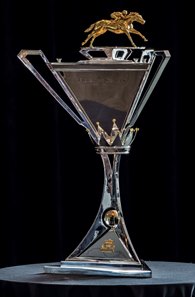Triple Crown Distances
Triple Crown Distances 8,9/10 867 reviews


Chicagoland Triple Crown and Valley & ‘Ville medals are available WHILE SUPPLIES LAST – REGISTER EARLY! Runners interested in the Chicagoland Triple Crown OR Valley & ‘Ville medal MUST register by 6 p.m. CST on Thursday, October 1st! Note: All Distance Challenge Medals MUST be picked up with in the Naperville Race Village.
Us Triple Crown Distances
Rags to Riches (left) is only the third filly to ever win the Belmont. Lady Firsts For the first time in over 100 years, a filly took the $1 million Belmont Stakes. Trainer Todd Pletcher's Rags to Riches and jockey John Velazquez edged past Curlin, giving Pletcher and Velazquez their first victories in a Triple Crown race. Story • Finley: What about an encore? Watch the Belmont Stakes • Cronley: Triple Crown Q&A My Belmont Day Mayne • Street Sense wins Derby Curlin plays spoiler in Preakness
|
| ||||||||||||||||||||||||||||||||||||||||||||||||||||||||||
Distances For Triple Crown Races
- With their win in the Belmont Stakes, trainer Todd Pletcher ended an 0-for-28 Triple Crown race drought, and jockey John Velazquez ended a 0-for-20 run. Hard Spun was all done in the Belmont.
- The Triple Crown kicks off with the Kentucky Derby Presented by Woodford Reserve on the first Saturday in May each year. It’s run at 1 ¼ miles at Churchill Downs in Louisville, Ky. The second race in the series, often called the “second jewel” or “middle jewel” of the Triple Crown, is.
- The Triple Crown of Open Water Swimming is a marathon swimming challenge consisting of three historically important swims: English Channel - 20.5 miles between England and France. Catalina Channel - 20 miles between Santa Catalina Island and the California mainland. Swim Around Manhattan - 28.5 mile circumnavigation of Manhattan Island, New.
- Quarter-horse racing, in the United States, the racing of horses at great speed for short distances on a straightaway course, originally a quarter of a mile, hence the name.Quarter-horse racing was begun by the early settlers in Virginia shortly after Jamestown was established in 1607. Traditionally the course was 0.25 mile (400 m), using whatever pathways were available or could be cut.